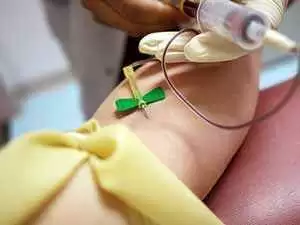Celiac.com 06/16/2014 - Differentiating between celiac disease and non-celiac gluten sensitivity (NCGS) is important for appropriate treatment, but is often challenging.
 A team of researchers recently set out to assess the best way to distinguish between celiac disease and non-gluten sensitivity. The research team included Toufic A Kabbani, Rohini R Vanga, Daniel A Leffler, Javier Villafuerte-Galvez, Kumar Pallav, Joshua Hansen, Rupa Mukherjee, Melinda Dennis and Ciaran P Kelly.
A team of researchers recently set out to assess the best way to distinguish between celiac disease and non-gluten sensitivity. The research team included Toufic A Kabbani, Rohini R Vanga, Daniel A Leffler, Javier Villafuerte-Galvez, Kumar Pallav, Joshua Hansen, Rupa Mukherjee, Melinda Dennis and Ciaran P Kelly.
Celiac.com Sponsor (A12):
For their study, the team reviewed records for 238 patients who were assessed for symptoms responsive to gluten restriction without having celiac disease ruled in or out. For each patient, clinicians noted the demographic information, presenting symptoms, serologic, genetic, and histologic data, nutrient deficiencies, personal history of autoimmune diseases, and family history of celiac disease.
They define NCGS as symptoms responsive to a gluten-free diet, together with negative celiac blood tests and negative duodenal biopsies while on a gluten-containing diet, or negative human leukocyte antigen (HLA) DQ2/DQ8 testing. Of the 238 patients in the study, 101 had celiac disease, 125 had NCGS, 9 had non-celiac enteropathy, and 3 remained undetermined. Nearly 70% of celiac disease subjects suffered symptoms of malabsorption compared with just under 25% of the NCGS subjects (P<0.0001).
In addition, the patients with celiac disease were far more likely to have a family history of celiac disease (P=0.004), personal history of autoimmune diseases (P=0.002), or nutrient deficiencies (P<0.0001).
The positive likelihood ratio for celiac disease diagnosis of a >2× upper limit of normal IgA trans-glutaminase antibody (tTG) or IgA/IgG deaminated gliadan peptide antibody (DGP) with clinical response to a gluten-free diet was 130 (confidence interval (CI): 18.5–918.3).
The positive likelihood ratio of the combination of gluten-responsive symptoms and negative IgA tTG or IgA/IgG DGP on a regular diet for NCGS was 9.6 (CI: 5.5–16.9).
When individuals with negative IgA tTG or IgA/IgG DGP also lacked symptoms of malabsorption (weight loss, diarrhea, and nutrient deficiencies) and celiac disease risk factors (personal history of autoimmune diseases and family history of celiac disease), the positive likelihood ratio for NCGS increased to 80.9.
Based on their findings, the team developed a diagnostic algorithm to distinguish celiac disease from NCGS.
People with negative celiac blood tests (IgA tTG or IgA/IgG DGP, who are eating a regular gluten-containing diet, are unlikely to have celiac disease.
Those with negative serology who show no clinical signs of malabsorption, and show no celiac disease risk factors, are highly likely to have NCGS and may not require further testing. Those with positive blood tests should undergo HLA typing to determine the need for biopsy.
Source:
- Open Original Shared Link






Recommended Comments